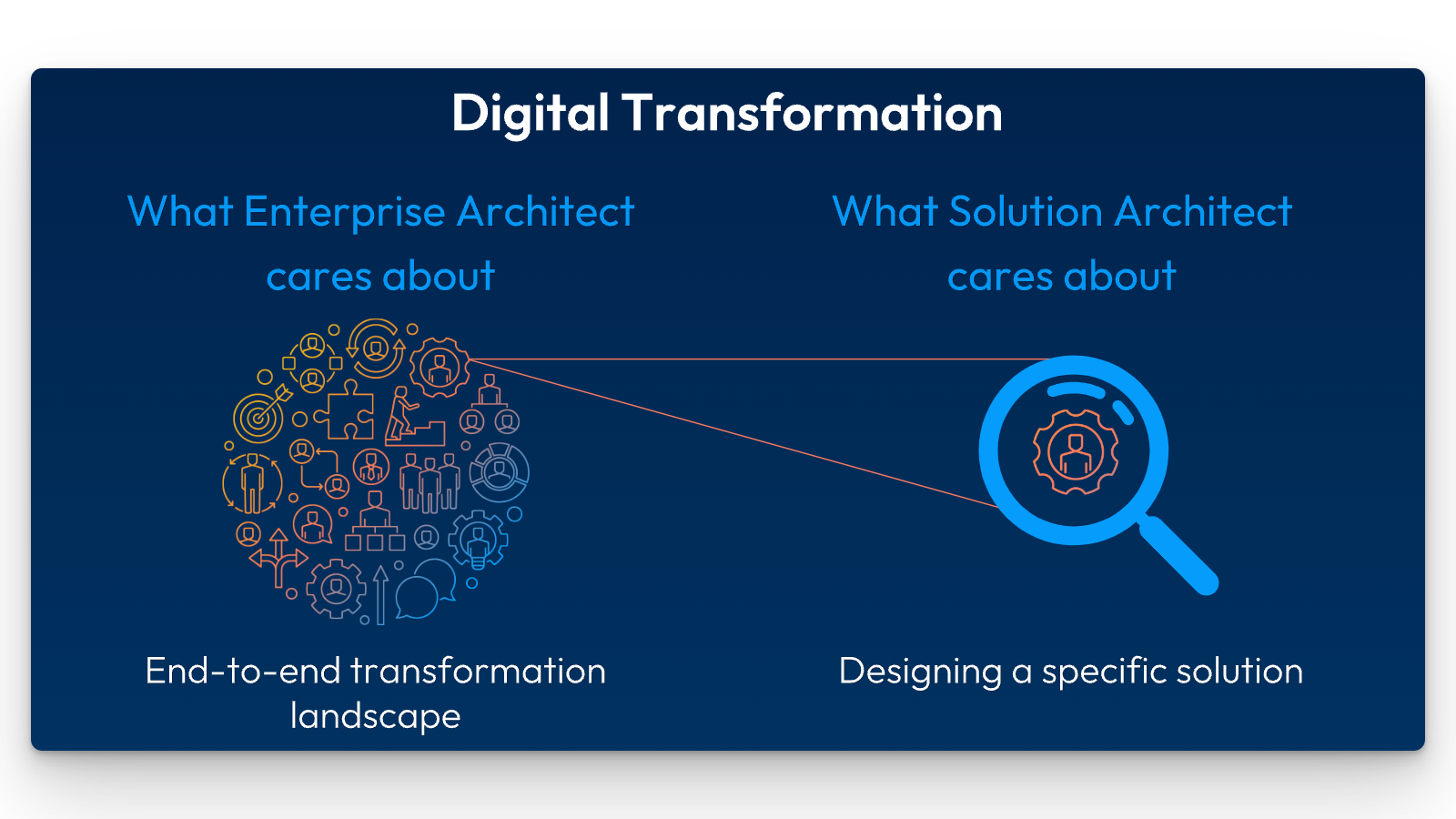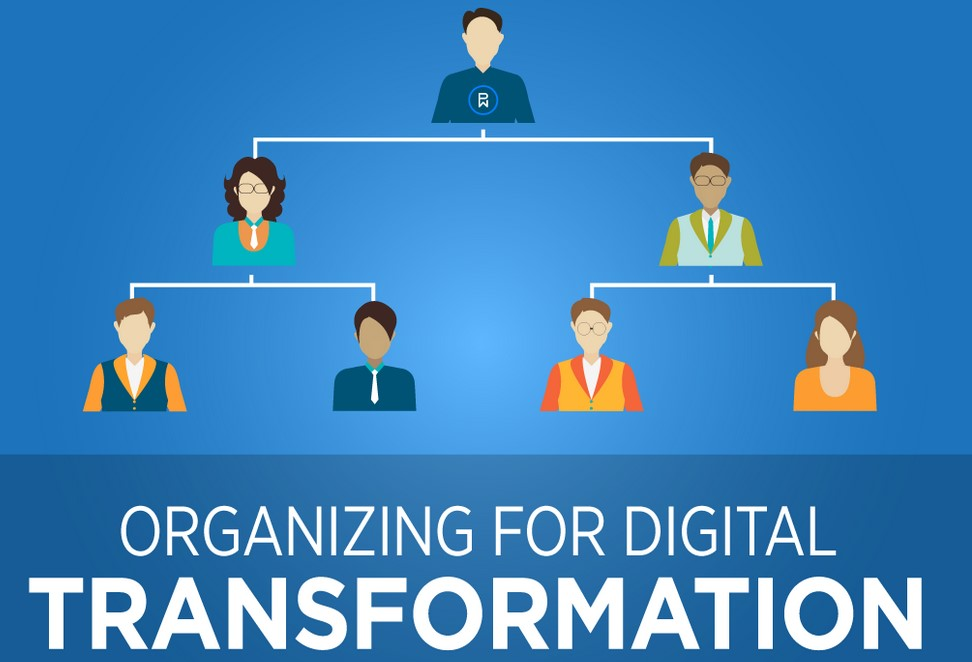Chatper 6.3 - Digital Transformation and Enterprise Architecture
Digital Transformation Overview

Digital transformation is a sweeping change across society and businesses, driven by the adoption of digital technology. It’s reshaped by the evolution of technology and the new products and services that come from it. This shift is often seen as a catalyst for innovation within companies and a springboard for novel business models, offering substantial enhancements in how operations are performed. While it’s frequently framed as a tech-centric issue, the essence of digital transformation extends beyond just technology.
Here are some key aspects of digital transformation:
- Innovative Enablers: The term SMACIT, standing for Social, Mobile, Analytics, Cloud, and Internet of Things, encompasses the disruptive technologies at the forefront of this transformation. Beyond SMACIT, advancements such as artificial intelligence and blockchain are also pivotal.
- Impact: Pronounced “smack it,” this acronym emphasizes the profound effect these technologies have on a company’s digitization journey. Despite the positive undertone, the changes can also bring about challenges and disruptions to an organization.
- Real-world Solutions: Technology alone isn’t the answer. Its effective application, combined with organizational capabilities, is what addresses real-world issues. Even conventional technology can lead to early wins in digital transformation efforts.
However, the true nature of digital transformation is found in the interplay between technology, human skills, and strategic planning. Tabrizi and colleagues outline crucial factors to consider when embarking on digital transformation:
- Strategy-Led: Align digital transformation with the overarching business strategy.
- Radical Commitment: Embrace the need for profound change and guide it with clarity.
- Internal Development: Cultivate the change organically within the organization through staff involvement.
- Skillset Shift: Adapt the skills and mindsets of employees to meet new challenges.
- Customer-Centric Drive: Let customer experiences dictate the change, starting with innovative products or business models to capture new markets, which then inform technical requirements.
Digital transformation shares similarities with Enterprise Architecture Management (EAM). They both emphasize business-driven approaches and clear objectives. Understanding the business – its strategy, capabilities, and necessary changes – is the preliminary step. This understanding informs the selection of relevant software applications and technologies. The process includes visualizing, planning, and monitoring changes. Digital Transformation and EAM could be considered two facets of the same strategic imperative.
Digital Transformation and the Architect’s Role

As businesses undergo digital transformation, the role of enterprise architecture becomes increasingly important. Technologies like cloud computing, mobile apps, automation, and data analytics are disrupting industries at an unprecedented rate. For companies to survive and thrive in this new digital era, they must thoughtfully evolve their underlying systems and processes. This is where enterprise architects step in to guide strategic transformation.
As an architect at a global logistics firm, I’ve witnessed firsthand how digital initiatives have impacted both our internal operations and customer experiences. Five years ago, all of our warehouse management was done with paper - now workers use mobile apps and augmented reality to pick orders. Customers no longer call a 1-800 number for support - they get answers through self-service chatbots and live agent apps. The pace of innovation is only accelerating as cloud platforms make new technologies easier to test and adopt.
This level of disruption requires careful stewardship to ensure we maximize benefits while minimizing risks. That’s why the role of enterprise architecture is so crucial for digital transformation. Architects provide a holistic view of the enterprise that spans people, processes, and technologies. We help leadership understand dependencies, constraints, and change impacts across the entire organization. Rather than focusing on a single department or project in isolation, architects take a strategic 30,000 foot view of the business.
When embarking on transformation, one of an architect’s first responsibilities is mapping the current or “as-is” architecture. This involves documenting all key systems, interfaces, data flows, and organizational structures. Only with a clear baseline can we properly assess where changes are needed. The next step is defining a target or “to-be” architecture that supports new business capabilities. Architects work closely with stakeholders to understand goals and translate them into a technical roadmap.
From there, we break the to-be architecture into manageable phases and projects. This sequencing is critical, as some changes depend on others being completed first. For example, migrating a monolithic application to the cloud may require refactoring it into microservices initially. Architects also identify quick wins that can generate early momentum and value. By balancing strategic initiatives with tactical improvements, we help ensure continuous progress along the transformation journey.
Communication is another vital part of the architect’s role. We explain complex technical concepts to executives in simple, business-focused terms. When stakeholders understand tradeoffs and dependencies, they can make more informed decisions. I also work closely with project teams, ensuring they have the right guidance, tools, and supporting infrastructure in place. By socializing standards and best practices, architects promote consistency across multiple transformation efforts.
Finally, architects monitor transformation outcomes against the defined architecture. Are we realizing intended benefits according to plan, such as reduced costs or increased customer satisfaction? Are there any new risks to address, like security vulnerabilities or performance issues? By tracking key metrics, we can identify successes to duplicate or problems to correct course on. This feedback loop is how architectures continuously evolve alongside the business over time.
In summary, enterprise architects act as the conductors, roadmap-makers, and guardrails for digital transformation. We provide strategic direction amid complexity, manage dependencies between interrelated changes, and promote standards for cohesive, sustainable evolution. As new technologies disrupt at an ever-faster clip, the architect’s role becomes ever more crucial for ensuring businesses thoughtfully navigate this digital journey. By guiding strategic evolution from a holistic viewpoint, architects help enterprises thrive in today’s digital-first world.